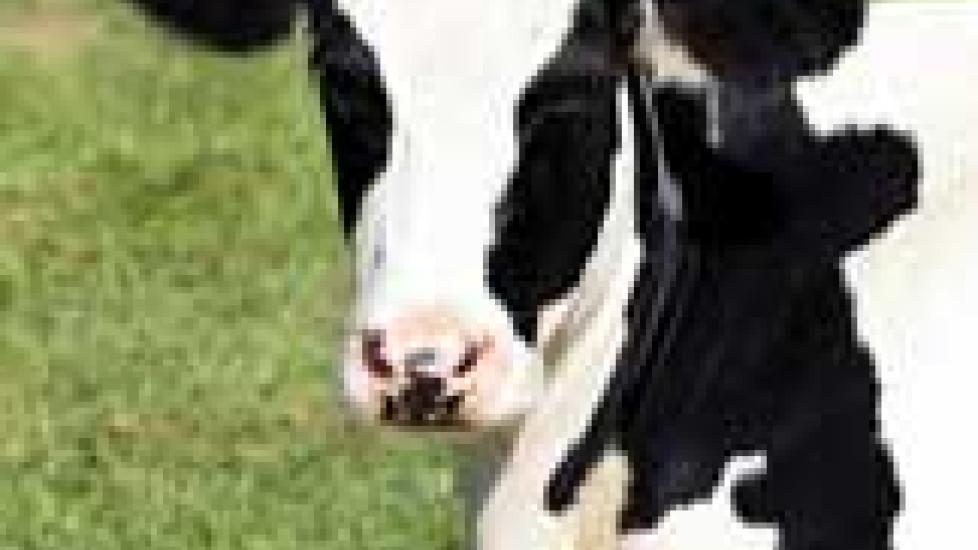Milk Fever
Today I’d like to tell you about a condition commonly encountered in the large animal world, particularly in the dairy industry: milk fever. Also known as bovine parturient paresis or hypocalcemia, milk fever is an acute metabolic disorder involving calcium. It does not, as the name suggests, have any infectious or "fever" qualities about it at all.
Milk fever is most commonly seen in high producing dairy cows within 72 hours of giving birth. When a cow begins to produce milk, large amounts of her own calcium are lost in milk production. Calcium is needed at a certain level in the body at all times. It has extremely important functions, as it is required for the proper conduction of nerve impulses and for contraction of muscle cells. As a cow’s blood calcium levels become quickly depleted via the loss of heavy lactation (blood calcium is the active and immediately available form of the mineral as opposed to the calcium deposits in bones), her body’s homeostatic mechanisms aren’t able to compensate and she can’t draw on calcium stores from her skeletal system fast enough.
As a result of this rapid calcium depletion, the affected cow begins to show a set of clinical signs that are so common, you can almost diagnose milk fever over the phone. Indeed, many experienced dairy farmers will diagnose this condition themselves and know how to treat it successfully. A cow suffering from milk fever will at first act wobbly and have trouble walking. Fine muscle tremors may be seen. More dramatically, she may fall and have trouble getting back up. This is usually the farmer’s first sign that something is wrong. After a few more hours, the cow will be completely unable to rise. This is usually when I am called out.
Upon further inspection at this stage, a cow with milk fever will usually have cold ears, as her circulation becomes affected. In fact, her overall body temperature is usually low. She will usually have poor to non-existent gut sounds and a dry nose. Additionally, she will normally be fairly quiet in demeanor.
All cases of milk fever are emergencies and need to be treated in a timely manner. This is because, after the cow is recumbent, in a few more hours, signs will worsen to the point of her becoming comatose and completely subject to flaccid paralysis. At this stage, the cow usually doesn’t make it.
Luckily, most farmers are astute observers and see their cows twice daily for milking anyway, so most cases of milk fever do not make it to this terminal stage. So, now that we’ve identified a cow with milk fever, how do we treat it? Calcium, of course!
Administering IV calcium is the way to cure milk fever. In school we were taught that this condition is one of the most satisfying to treat, as it usually makes you look like a hero. I can heartily confirm this. Usually after one 500 mL bottle of IV calcium, the cow is standing and hopefully making her way shakily to the feed bunk. Many times, especially if she’s a large cow, a second bottle will be given under the skin for a slower release of calcium over the next few hours. Barring other complications, most cows only need treatment once.
One thing to note: Calcium itself is actually toxic to the heart — give it too quickly and you’ll give the poor cow a heart attack. Clinicians at school terrified us with this fact and I can guarantee the first handful of milk fevers I treated were given calcium so slowly I think the farmers were starting to wonder what the holdup was. Eventually you get a feel for the correct speed at which to give calcium.
Somewhat counterintuitively, the best way to prevent milk fever is to provide a diet before lactation starts (called the dry period) that is relatively low in calcium. This forces the cow’s body to ramp up her own bone resorption of calcium, which conditions her body to quickly replace calcium loss in the milk. Many dairies can greatly reduce their cases of milk fever through proper nutrition.

Dr. Anna O’Brien
Image: prochasson frederic / via Shutterstock
